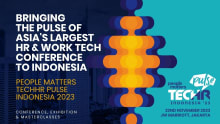Managing workforce challenges in a post pandemic world

It was the best of times, it was the worst of times, it was the age of wisdom, it was the age of foolishness, it was the epoch of belief, it was the epoch of incredulity, it was the season of light, it was the season of darkness, it was the spring of hope, it was the winter of despair - Charles Dickens, A Tale of two Cities
The famous opening lines from Charles Dickens’ seminal novel on the French Revolution may very well be an apt indicator of things to come. As the cases continue to dip, and the governments selectively relax the Covid norms amidst the fears of a third wave, corporates can easily be grouped into the ones fighting with their backs to the walls and those who are breaking down the walls and grabbing new empty spaces in the consumer’s mind at a fierce pace. And yet, it is a delicious irony that both in very different contexts have a lot of similar challenges facing them.
The immediate aftermath of Covid proved the case of WFH becoming an ‘acceptable’ norm. With improving vaccination and easing curbs on public transportation and travel, the narrative is now shifting to the efficacy of WFH on a long-term basis vis-à-vis the impact on productivity and challenges. There are no binaries here; whether it is the vaccination or the lifting of curbs or the dangers of a third wave, fear still pervades the minds of the workforce. Worries about venturing into offices, risks of commuting via public transportation, or being in crowded places even with social distancing and masking norms are pretty much genuine. The long commutes to office have now been replaced by a deluge of Zoom calls promoting worried HR departments to declare ‘No Zoom Days’. At the same time, many would also want to move back to their earlier routines of a workplace being outside and away from home. There is even a belated recognition of the physical separation of workplaces and homes. As most companies attempt to understand the “readiness” to return to offices, there are no easy answers.
At Mirchi, we have retained flexibility to work from home/anywhere but have also opened our offices to let small workgroups and teams mutually decide to meet at regular intervals of course with the safeguards of vaccination and Covid appropriate behaviours at the workplace. The entrepreneurial work culture at Mirchi and the distributed workforce at 60+ locations both ensure that any policy around ‘Resuming Work from Office’ is co-created in consultation with team members of that state/city and not in the Corporate Head Quarters – which is how it should be.
Impact of WFH/WFA
Post-Covid, WFH/WFA is no longer a defining characteristic of a progressive organisation. Almost all companies survived with a remote workforce operating outside of the office premises for fairly long periods. But as things improve, there surely will be a shift to WFO. Most companies would design appropriate norms and policies around using WFH/WFA options. A well-defined policy framework around WFH/WFA will serve as a culture differentiator, build employer equity and help attract talent.
It may be tempting to see WFH/WFA as all good with no grey shades. They say that politicians campaign in poetry but govern in prose. Similarly, policies, especially the ones that make for good headlines and can be flaunted on Social Media, are made on employee portals and staff manuals but the implementation of those policies happens in the minds of people.
To make WFH a successful intervention, it will need to be accompanied by norms around work measurement and mindset change around leaders being comfortable with not seeing some of their teams in the office regularly. There will also be managerial challenges around building camaraderie and making a cohesive unit. From an employee’s perspective, there may also be worries around their performance assessment carried out by a manager who is traditionally used to “seeing the team member” slog it out in the office. Perceptions around efforts and competence are often based on traditional visual markers – hours clocked in the office, informal chai-sutta sessions, body language, one-on-one with the manager, corridor chats, water cooler conversations, peer interactions, etc. There have been increased queries around monitoring employee productivity tools during the pandemic. There is anticipation regarding privacy concerns of the people if and when these tools are adopted. Then there is a fear of missing out, especially in companies that happen to be a little more unstructured where work discussions often happen impromptu. Offices also allow for social capital to be built and informal networks formed.
Ultimately, for the HR departments, much after the customary announcements of ‘Resuming work from office’ advisories and new guidelines around WFH/WFA, the next few months will be about managing the 50 shades of grey in the implementation.















